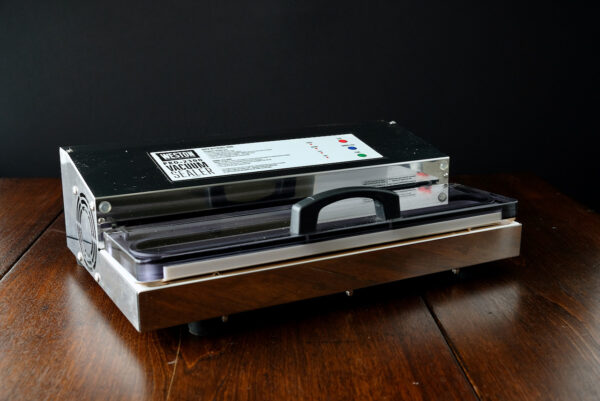
By Wade Truong
Photos by Wade Truong
Truth be told, all you really need to break down wild game is a knife, but there are a few other tools that allow you to make the most out of the animal and give you the most flexibility in the kitchen.
Knife Sharpener and Honing Steel
A knife is the most important tool in any game processing, and the debate on which knives are the sharpest, toughest, and hold an edge the longest is never-ending; I’m not going to weigh in with a recommendation. There are many, many excellent knives out there. However, it doesn’t matter how sharp your knife is when you buy it if you can’t sharpen it when it gets dull. Knowing how to properly use a steel to hone your knife will keep it sharper longer. Once a knife loses its edge, it gets duller exponentially.
Once a knife does get to the point where it’s not sharp, it becomes dangerous and a chore to use. Having a sharpening tool and knowing how to use it is just as important as having a knife that will take an edge. There are a lot of options out there for sharpening tools—pick one that you feel comfortable with and spend the time learning how to use it. I’ve used manual and mechanical sharpeners, and both have their pros and cons. What I use the most is a 30” belt sander, 400 grit for re-edging, 800-1600 grit for polishing and a leather strop with compound for that razor finish. I use either a diamond or ceramic steel for touching up the knives before use.
Saw
You don’t need a saw to break down a deer, but it does give you more culinary options. I use a saw to cut ribs and bone-in backstraps, and for splitting vertebrae for porterhouses. The saw also comes in handy for cross-cutting shanks and shoulders for braises or femurs for stock.
A meat-cutting bandsaw works best, but most of us don’t have one of those in our kitchen or garage. Hacksaws and bone saws work well, as does a sawzall with a fine-tooth blade, but those tend to work best when there is a second set of hands available to hold everything steady. I prefer to use an oscillating tool with a fine-tooth blade. This lets me operate the saw with one hand and hold the meat on the board with the other.
Grinder
A grinder, like a saw, allows you to do more with your game. It is also a convenient way to use up the trim and tougher cuts if you don’t plan on using them whole or cubed. It also opens up the door to making your own fresh sausages, salami, burger and a lot more.
A grinder attachment for a stand-up mixer works well for small batches, but a dedicated grinder makes quick work of a larger pile of trim.
Sausage Stuffer
Though technically optional, a sausage stuffer makes casing your own sausages possible. Salami, summer sausage, lebanon bologna, and brats are delicious, and if you want to make them you need a stuffer. Stuffer attachments for stand-up mixers and grinders work, but a dedicated vertical stuffer will get the job done faster and yield better results.

Vacuum Sealer
A vacuum sealer will make sure you keep those hard-earned calories in the best condition in your freezer. I’ve used a number of vac sealers from the super cheap to the commercial grade, and I recommend you buy a heavy duty one if you plan on processing more than a few animals a year. The cheaper ones have a tendency to break after a few seasons of heavy use. If you have the space for it, a chamber vacuum sealer does the best job, and the bags are cheaper. If you’re limited on counter space like I am, the chamber sealer might be too much. A Weston pro or similar vacuum sealer with a strong motor and large seal bar will help ensure that your wild proteins stay in the best possible shape while in cold storage.
Having a vacuum sealer also opens up a whole world of new culinary techniques—sous vide, infusions, fast marinades and meal prep, among others.
Questions or comments? Feel free to contact https://elevatedwild.com/about or on IG @elevatedwild


